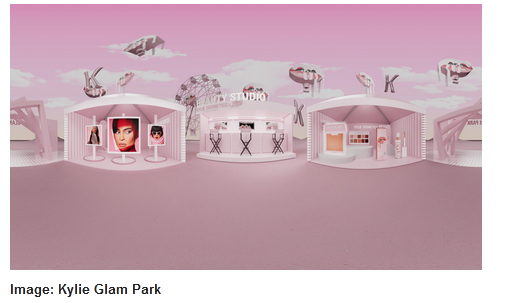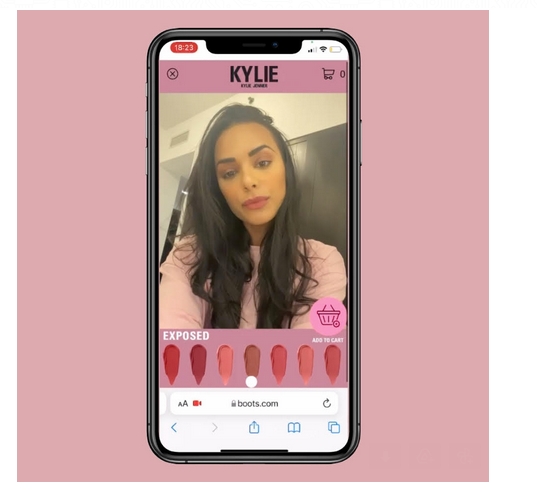The Growth of the Experience Economy for Real-world Events
How brands are combining physical and digital activations in their experiential marketing and the role that technology is playing to enhance customer experience at real-world events.
The opportunities presented for brands to interact with customers in immersive environments within the metaverse are talked about a lot. But it’s worth also noting the ways brands are using the technology available to merge physical and digital interactions and offer enhanced customer experience in real life (IRL).
Using apps to deliver additional content and access and developing virtual try-on (VTO) capabilities with virtual reality (VR) and augmented reality (AR) technology are an integral part of the digital customer experience for many beauty and fashion brands.
AI ML insights: eGain Connects with IBM Watson Assistant for Smarter Service
Augmenting IRL Commerce in Experience Economy
With customers becoming more familiar with digital technologies such as VR and AR in their online interactions with brands, the next logical step is to integrate these into physical commerce spaces. Digital innovation is starting to have more of an impact on real-world customer experience.
Acting as an extension of the augmented reality Kylie Virtual World, developed with Boots.com to showcase Kylie Jenner’s new Kylie Cosmetics range in a shoppable online experience, the Kylie Glam Park popped up in Covent Garden this month. The fully immersive and unique experience showcased the latest cosmetic and skincare launches. The pop-up offered shoppers the chance to enjoy make-up and skin consultations as well as providing VTO features to explore the latest looks. There was a Glam Shop run in partnership with Boots, interactive games and complimentary giveaways to further expand on the customer experience available.
![Image: Kylie Glam Park]() Experiential Marketing and Immersive Experience
Experiential Marketing and Immersive Experience
Nike uses its app to deepen its relationship with customers – providing access to experts across a range of sports, personalized workouts, priority access to events, membership of the Nike Plus rewards program and online shoe fitting.
In Nike’s House of Innovation flagship store in New York, all the benefits of the m-commerce experience customers are used to are being used to augment the physical experience in-store. With the app in store mode, customers can discover more about the merchandise in front of them, add items to their favorites list, request try-ons and self-checkout on mobile. The technology is being used to further personalize and improve the retail experience by creating a more immersive shopping encounter.
A Social-First Approach to Commerce
Brands that have had success with technological experiments in gaming, social media product drops and app-driven customer service are increasingly bringing these elements in-store. Online, Burberry have built in ways to browse, explore influencer recommendations and experience platform-specific product drops.
As with the Nike app, Burberry are using their branded tech to focus on their social retail experience. In their flagship store in China, customers can use a custom WeChat mini-program to book in-store appointments and try-ons. They can also contact customer service, discover new products and exclusive content and share their own content. The app provides an in-store digital companion. Interactions and activity by customers build social currency and unlock exclusive access.
Mark Morris, Burberry’s senior VP of digital commerce said that “This store is about trying to connect your online life with your in-store life so that one adds value to the other”.
User-generated content
For brands, offering VTO experiences has a very clear marketing benefit – user-generated content. In the Burberry flagship, there is an entire digitally enhanced room, the Trench Experience, designed to help customers create content to share on social media.
At the Kylie Glam Park, customers were presented with endless social sharing moments, including capturing how they look in new lip shades on a big screen. Kylie Jenner said: “I am so excited about bringing the Kylie Cosmetics Glam Park to Covent Garden in London as I want my fans to be able to try my make-up and skincare products in person whilst also being able to have fun with the brand and achieve the latest summer glam looks.”
![Image: Kylie Glam Park]() Personalizing the Experiential
Personalizing the Experiential
VTO might not be an immediately obvious route for a food brand, but Cheetos created a ‘Hands-Free House’ earlier this year, showcasing hands-free devices for people whose fingers are coated in the ubiquitous orange dust the snack leaves behind. The experiential pop-up ended in a backyard with catering, letting guests enjoy additional socializing opportunities. This mixed reality marketing strategy was part of a wider campaign to connect with consumers through more personal immersive experiences, both in-person and virtually.
Taking the experience beyond the retail element and tapping into more face-to-face engagement deepens the opportunity for brands to enhance their customer experience. Kylie Cosmetics went full circle by rebranding the Kylie Virtual World to match the Glam Park, ensuring customers who were unable to access the physical space could still share in the experience.
As customers become more familiar with VR and AR, they increasingly expect to encounter more of these technologies in their IRL experiences as well as online spaces. Brands have an opportunity to strengthen consumer engagement by merging the physical and digital to deliver an enhanced customer experience.
Tips for Incorporating Digital Experiences Into Your Next Brand Event
INSIGHTS – Use your VR or AR experience at an event to gather insights from your audience and guests. With most AR now accessed or activated via scanning a QR code, there are a number of touchpoints throughout the experience navigation to ask some key questions – from the initial home screen to hotspots throughout.
Recommended: Emotional AI: How Cultural Factors Influence Gen Z Attitude Toward Technology
IN SIGHT – Make sure there is a clear call-to-action or the VR/AR feature is a focal point if you want to ensure maximum engagement. The more guests who can see and use it, the more potential data you can capture (point above). Also greater exposure increases the likelihood of guests sharing the experience on their socials. Adding wider reach for your event and brand.
INCENTIVE – Giving guests a reason to engage with your digital experience by incentivizing can be a great value exchange that makes them feel rewarded. You could reveal something exclusive in the VR/AR experience, or offer a f********.
ENHANCE – Does your VR/AR feature enhance the guest’s experience at your event?
Is there a purpose or reason – or is it a solution – Take a make-up or clothing brand. There might be a limited number of makeover spots with the make-up artist or only a few changing rooms. AR tech can offer a Virtual Try-On feature so more guests can test and try the products they are interested in.

 Experiential Marketing and Immersive Experience
Experiential Marketing and Immersive Experience Personalizing the Experiential
Personalizing the Experiential
Comments are closed.